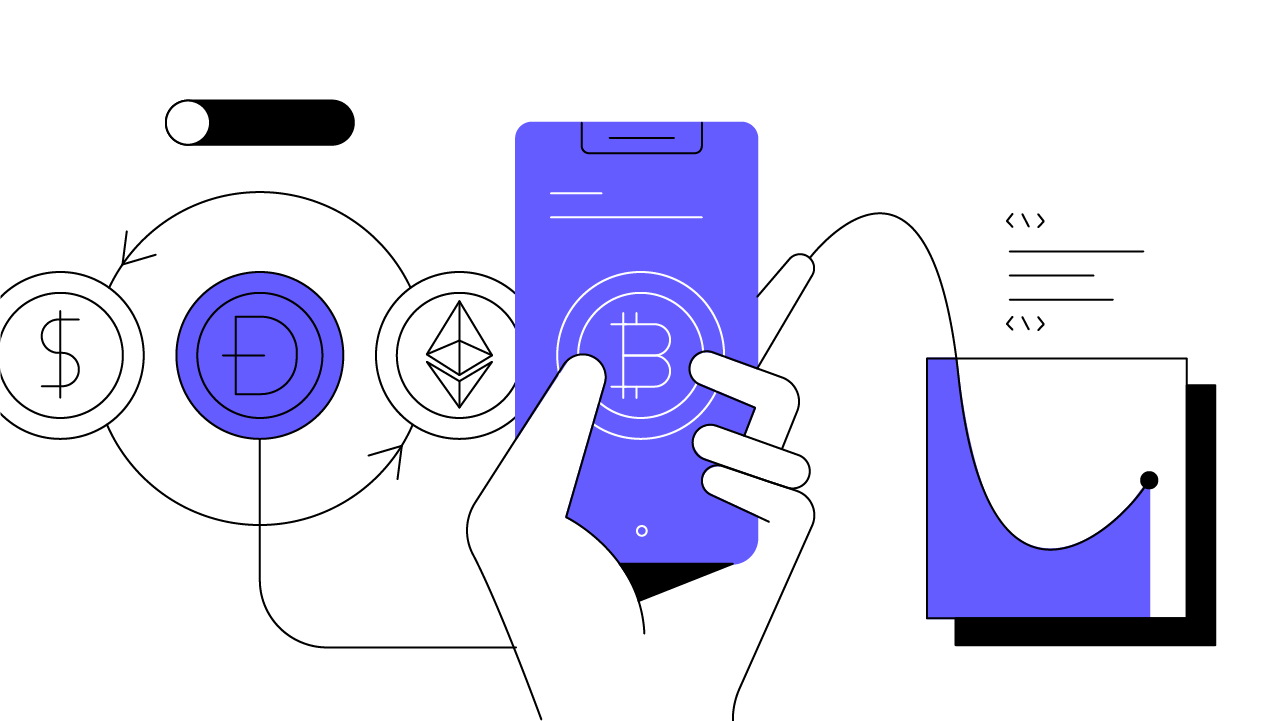Learning the Basics of Spot BTC ETFs
Bitcoin Spot ETFs have exploded in popularity since coming to the US in January 2024. But how exactly do they work? And what are their pros and cons? Let’s explore.
Updated February 12, 2025 • 3 min read

Summary
A bitcoin spot ETF is an exchange-traded fund that mirrors the price of an actual bitcoin. Launched in the US in January 2024, these funds are the first to hold bitcoin as an underlying asset–unlike future BTC ETFs, whose underlying assets are BTC futures contracts. Rather than opening a digital wallet, investors can purchase spot BTC ETFs through the same traditional brokerages they use to buy and sell stocks and bonds.
A spot bitcoin ETF is a liquid investment fund that ties its value to the price of BTC.
Investors can purchase spot BTC ETFs through the same traditional brokerages where they invest in stocks and bonds. This offers a simple, low-cost way to gain exposure to BTC price movements without opening a digital wallet and buying BTC directly.
In January, the US Securities and Exchange Commission (SEC) approved the first 11 spot BTC ETFs, opening up the space to 401Ks, IRAs and other traditional investment vehicles. Since the approval, the price of BTC has jumped, signaling a return of investor confidence in the market.
How Do Spot BTC ETFs Work?
Unlike many cryptocurrency funds, spot BTC ETFs invest in actual bitcoins rather than derivative contracts backed by futures BTC ETFs. By investing directly in the asset, spot BTC ETFs try to provide a more accurate reflection of BTC’s real-time market price.
A spot BTC ETFs primary goal is to mirror the price of BTC as closely as possible. This is achieved through the purchase and storage of actual bitcoins, with the fund's value fluctuating in tandem with the cryptocurrency's market price. By tracking the price directly, these ETFs give investors a clear and immediate sense of their investment's performance relative to the BTC market.
It’s possible for a spot BTC ETF to occasionally differ from the price of BTC, but when that happens, traditional financial actors–often asset managers–will redeem huge swaths of shares to bring the price back in line to reflect BTC’s value.
The Role of Crypto Custodians
Registered custodians oversee spot BTC ETFs using digital vaults. These custodians are responsible for the safekeeping , ensuring that the assets are protected against theft and unauthorized access. This provides a reassuring solution that aligns with traditional asset safeguarding practices.
Pros of Spot BTC ETFs
Accessibility
Spot BTC ETFs offer a regulated bridge to the crypto world. But part of their appeal is familiarity. ETFs are a collection of securities within a specific framework or industry and have been around for decades. As with traditional ETFs, spot BTC ETFs trade on standard exchanges and fall under the purview of financial regulators, offering a layer of security and compliance not always associated with direct cryptocurrency transactions.
Now, investors can simply choose one of the 11 available spot BTC ETFs to show they’re bullish about the future of crypto.
Cost-Effectiveness
When it comes to investing in BTC, costs vary widely. Traditional crypto exchanges often come with a structure of fees that may deter some investors. Spot Bitcoin ETFs, however, have been noted for their cost-effectiveness, with lower fees being a significant draw. By choosing these ETFs, investors can potentially save on the costs traditionally associated with buying and holding BTC directly (see transaction fees) .
Cons of BTC Spot ETFs
Price Volatility
Bitcoin's price movements have historically been more volatile than traditional assets, with extreme price swings up or down with minimal explanation or transparency. And unlike traditional stocks, BTC’s price isn’t tied to any specific performance metrics. Analyst price targets on the future value of BTC vary significantly, with some claiming its soon headed to $100K and others predicting an incoming dip because of persistent macroeconomic pressures.
Regulatory Concerns
When Satoshi Nakamoto launched BTC in 2009, some viewed it as a way to sidestep the global financial system. But cryptocurrencies have become increasingly mainstream over the past decade. As a result, US regulators have fought to rein in the asset class, with the US Securities and Exchange Commission (SEC) repeatedly targeting a range of companies it claims has run afoul of US securities laws.
So far, the SEC has approved just 11 spot BTC ETFs despite receiving numerous applications. And it’s unclear how they will treat them moving forward.
Future of Spot BTC ETFs
In April, regulators in Hong Kong approved spot BTC and ether ETFs, marking a stark reversal after China banned crypto trading and mining outright in 2021. Both ETFs struggled during their first week, attracting just $22.5 million in inflows. But there is reason for optimism. A report from BTC investor Richard Byworth indicated that these products could soon become available to mainland Chinese investors.
In the US, spot BTC ETFs appear to be on more solid footing. BlackRock, the biggest asset manager in the world, has recently doubled down on crypto, with their spot BTC fund now holding some $6.6 trillion in assets. In May, the SEC also approved the first ether ETFs , signaling that regulators are becoming more comfortable with crypto’s role in the US financial system. It’s now likely only a matter of time before other investors pile in.
Cryptopedia does not guarantee the reliability of the Site content and shall not be held liable for any errors, omissions, or inaccuracies. The opinions and views expressed in any Cryptopedia article are solely those of the author(s) and do not reflect the opinions of Gemini or its management. The information provided on the Site is for informational purposes only, and it does not constitute an endorsement of any of the products and services discussed or investment, financial, or trading advice. A qualified professional should be consulted prior to making financial decisions. Please visit our Cryptopedia Site Policy to learn more.

Is this article helpful?


